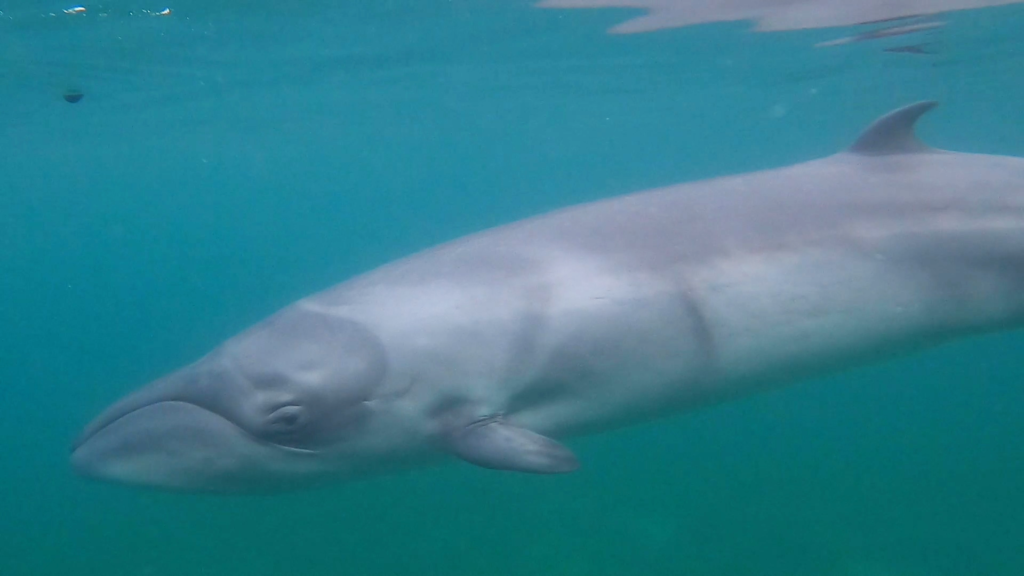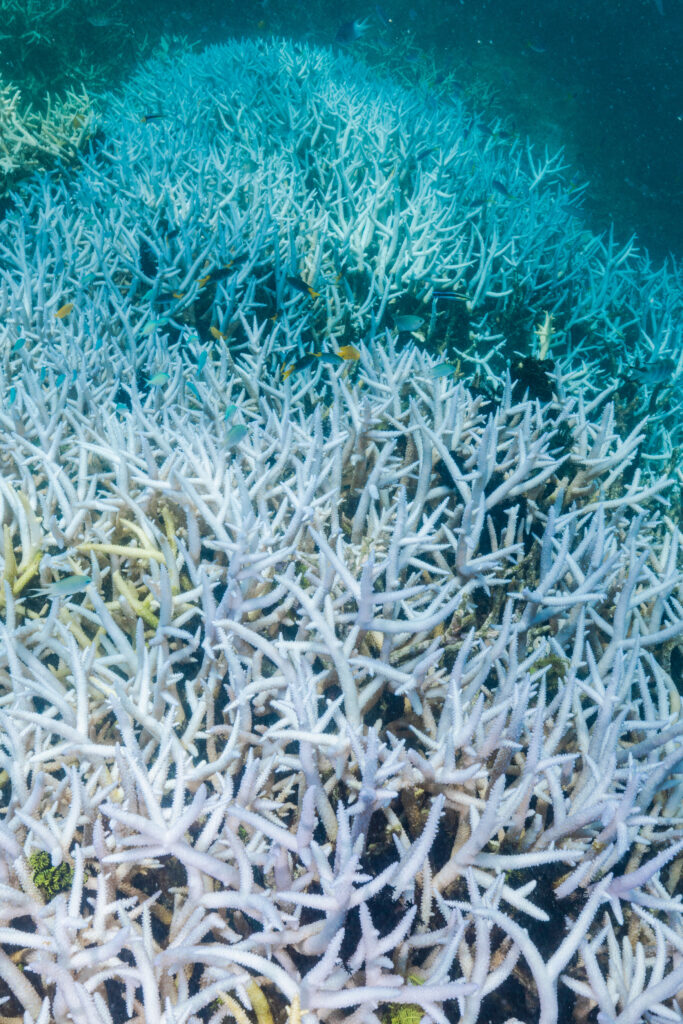The smallest member of the filter-feeding family is one of the only whale species not to embark on seasonal migrations, new research finds.

The pygmy right whale is an enigma in the whale world. Not only is it the smallest of the characteristically large filter-feeding baleen whales, but it’s also rarely sighted and seldom studied – partly because of its inconspicuous nature and resemblance to minke whales.
But new research led by UNSW Sydney analysing chemical clues hidden in the jawlines of pygmy right whales confirms what scientists have long suspected – these majestic aquatic mammals behave quite differently to their much larger whale relatives. The research, published in Frontiers in Marine Science, suggests the pygmy right whale is one of the few whale species to forgo long-distance migrations to Antarctic waters and instead reside in the temperate waters near Australia throughout the year.
“If you google pygmy right whale, one of the first queries that comes up is whether they are extinct, which illustrates just how little we know about them, and how little known they are,” says Adelaide Dedden, lead author of the study and a marine ecologist at UNSW Science. “What’s especially surprising is that it turns out these whales are somewhat a resident species, given they appear to be hanging around Australia year-round.”
“They’re our little homebodies, just happy to hide away and never leave the comforts of our continental waters,” says Professor Tracey Rogers, a marine ecologist at UNSW Science and senior author of the study. “It’s also fascinating as they are similar in size to the ancestral baleen whales that didn’t journey between feeding and breeding grounds, and now we know these small whales behave similarly.”
Uncovering the chemical clues in their bristles
Studying an animal the size of a whale in a lab – even a relatively small species like the pygmy right whale – is challenging. Instead, scientists can analyse the composition of smaller tissues that keep detailed records of an animal’s activity.
For filter-feeding whales like the pygmy right whale, long, slender keratin bristles called baleen plates that hang from their upper jaw allow them to take in many small prey like krill – but they also lay down chemical signals called stable isotopes that give researchers hints about their behaviour.
“As the baleen grows, biochemical signals from their food called stable isotopes get trapped,” Prof. Rogers says. “These signals don’t decay over time, so it’s like reading a history book about their behaviour, including what they ate and the general area they were in at the time.”
For the study, the researchers analysed the stable isotopes in the baleen plates of 14 Australian pygmy right whales. Each baleen plate, loaned from the South Australian Museum, contained up to three to four years’ worth of data to assemble a picture of the pygmy right whale’s diet and movements across nearly 40 years – the most extensive study of the pygmy right whale diet and movement to date.
“Their isotopic record shows they remain in mid-latitude waters year-round off southern Australia, feeding on krill and copepods (small crustaceans),” Ms Dedden says. “There was no evidence of feeding in Antarctic waters at all, suggesting the waters off Southern Australia appear to be able to support their needs year-round.”
“This makes sense when you look at the slender structures of their baleen plates relative to their body size,” Prof. Rogers says. “They need to draw in as much as possible from these less productive waters around Australia to stay in the region year-round.”
The researchers also found some evidence the whales’ feeding patterns were linked to oceanic changes that drive food web dynamics in the region, specifically upwelling events – natural cycles bringing nutrient-rich water to the surface, resulting in increased krill availability in Australian waters.
“The signals in the baleen that reflected Australian krill coincided with times of upwelling in summer, which made sense because that’s when the krill is most available,” Ms Dedden says. “That signal wasn’t as strong during winter, which reflects the lower availability of krill during downwelling, so it further supports our overall findings.”
A potential indicator of ecosystem health
The researchers say their findings help lay the foundation for more research that can help us better understand the pygmy right whale.
“Now we have increased evidence they live in this mid-latitude distribution, it would be ideal if we could do some satellite tagging to more closely monitor their movements and see exactly where they’re travelling around in the region,” Ms Dedden says.
“They were never targeted for whaling, so their numbers are likely stable now,” Prof. Rogers says. “But they’re data deficient, and we don’t know enough about them to know for sure they are in a good place.”
While its current status is classified as least concern, the pygmy right whale’s population trend is still relatively unknown, and the researchers say it may be vulnerable to emerging risks such as warming oceans.
But the pygmy right whale may also be valuable as an indicator species scientists can study to monitor the marine environment.
“They may face future challenges if there are significant changes in the marine ecosystem, given they feed at the base of the food chain and appear to rely on particular regions,” Ms Dedden says.
“But with more research, they also have the potential to help us better forecast these risks to protect both them and the ecosystem they call home.”
The study also involved co-authors Gary Truong and Dr Matthew McCurry from UNSW, Dr Catherine Kemper from the South Australia Museum and Dr Paul van Ruth from the University of Tasmania.


